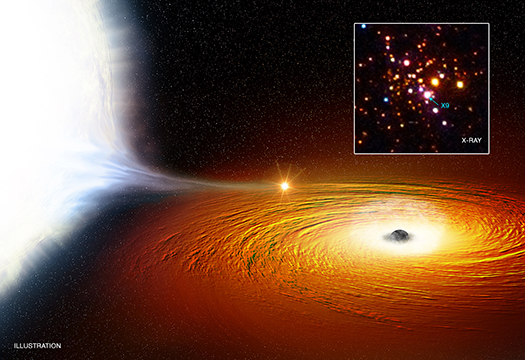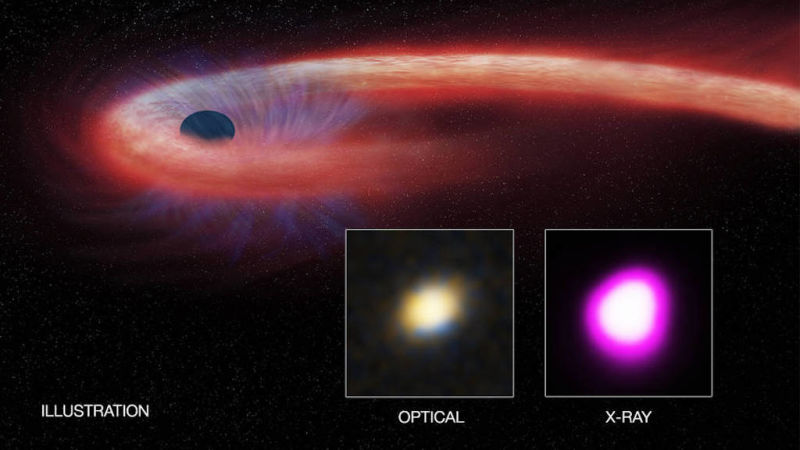
The Event Horizon Telescope, or EHT, is a network of around ten radio telescope observatories across the planet, synchronized via the most precise atomic clocks, and pointed directly at the center of our galaxy.

Imagine being caught in the clutches of a black hole, being whirled around at dizzying speeds and having your mass slowly but continually sucked away. That’s the life of a white dwarf star that is doing an orbital dance with a black hole.

New research details the longest black hole brunch ever studied, in which a supermassive giant ripped apart a neighboring star and feasted on it for almost 10 years.

Researchers have used NASA's Chandra X-ray Observatory to produce an X-ray image of space (the deepest-ever X-ray, in fact) that has uncovered an abundance of supermassive black holes.

Gravitational-wave data show tentative signs of firewalls or other exotic physics.

A stunning new image captured by the Hubble Space Telescope shows a galaxy that's being strangled by tentacles of gas and dust. The strange and intricate shape of this celestial object is caused by a supermassive black hole.

Finding evidence of gravitational-wave memory could help solve the black hole information paradox.

An international team of astronomers crack the case of a mysterious galaxy,Markarian 1018, that has suddenly dimmed after shining brightly for 30 years.

New work from a team led by Carnegie’s Eduardo Bañados has discovered 63 new quasars from when the universe was only a billion years old.

Computer simulations of a spherical collection of stars known as 'NGC 6101' reveal that it contains hundreds of black holes, until now thought impossible.

A recent study by researchers at the Institute of Corpuscular Physics in Valencia suggests that matter might in fact survive its foray into these space objects and come out the other side.

New data from NASA's Nuclear Spectroscopic Telescope Array, or NuSTAR, has, for the first time, begun to pinpoint large numbers of the black holes sending out the high-energy X-rays.

Astronomers working with the European Space Agency's (ESO) Very Large Telescope (VLT) in Chile have just announced that a black hole-observing device called GRAVITY is now fully operational and it's has already provided one accurate measurement.

Astronomers have presented one of the most complete models of matter in the universe and predict hundreds of massive black hole mergers each year observable with the second generation of gravitational wave detectors.

Signal was produced by two black holes colliding 1.4 billion light years away.